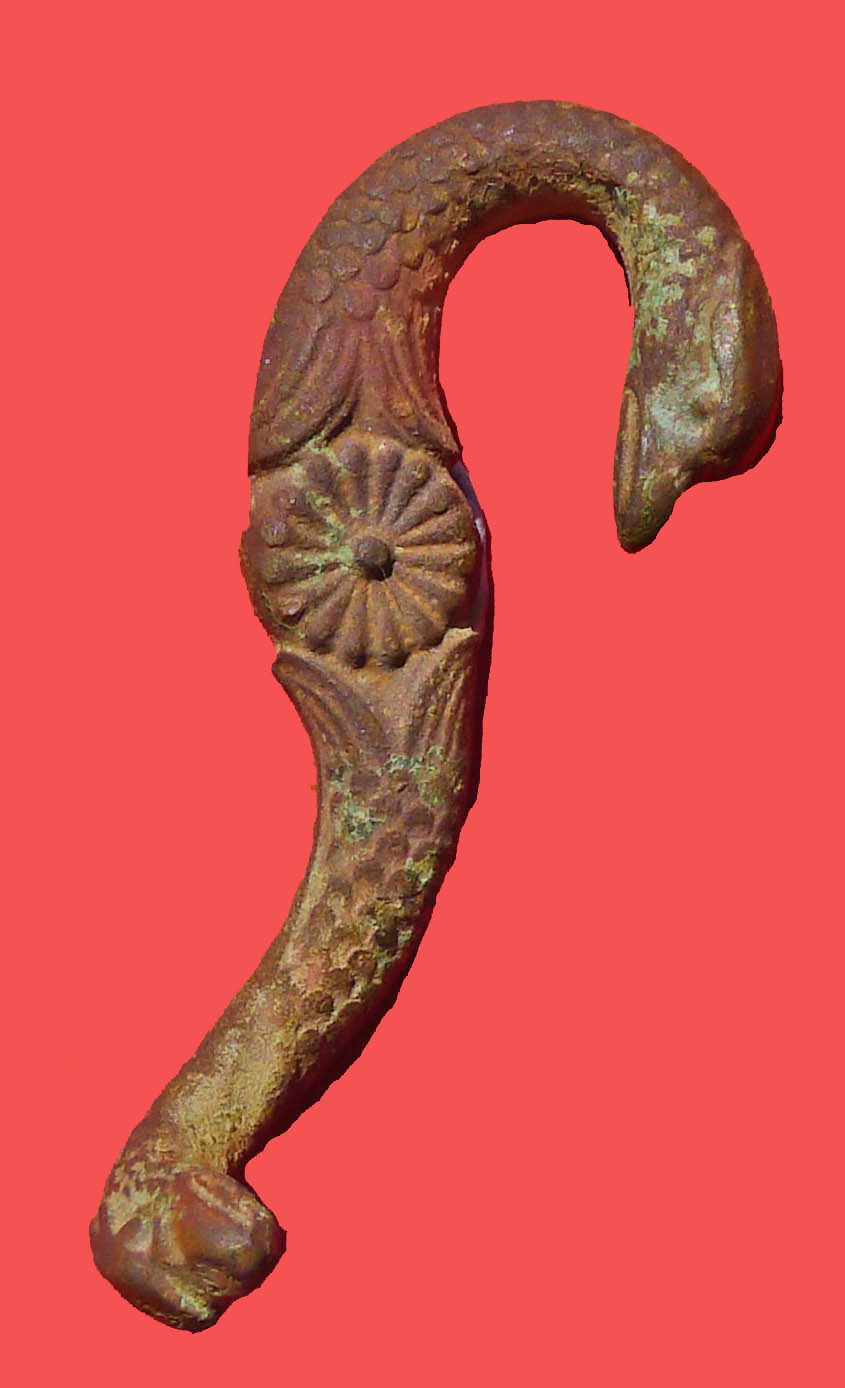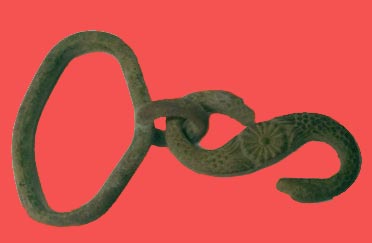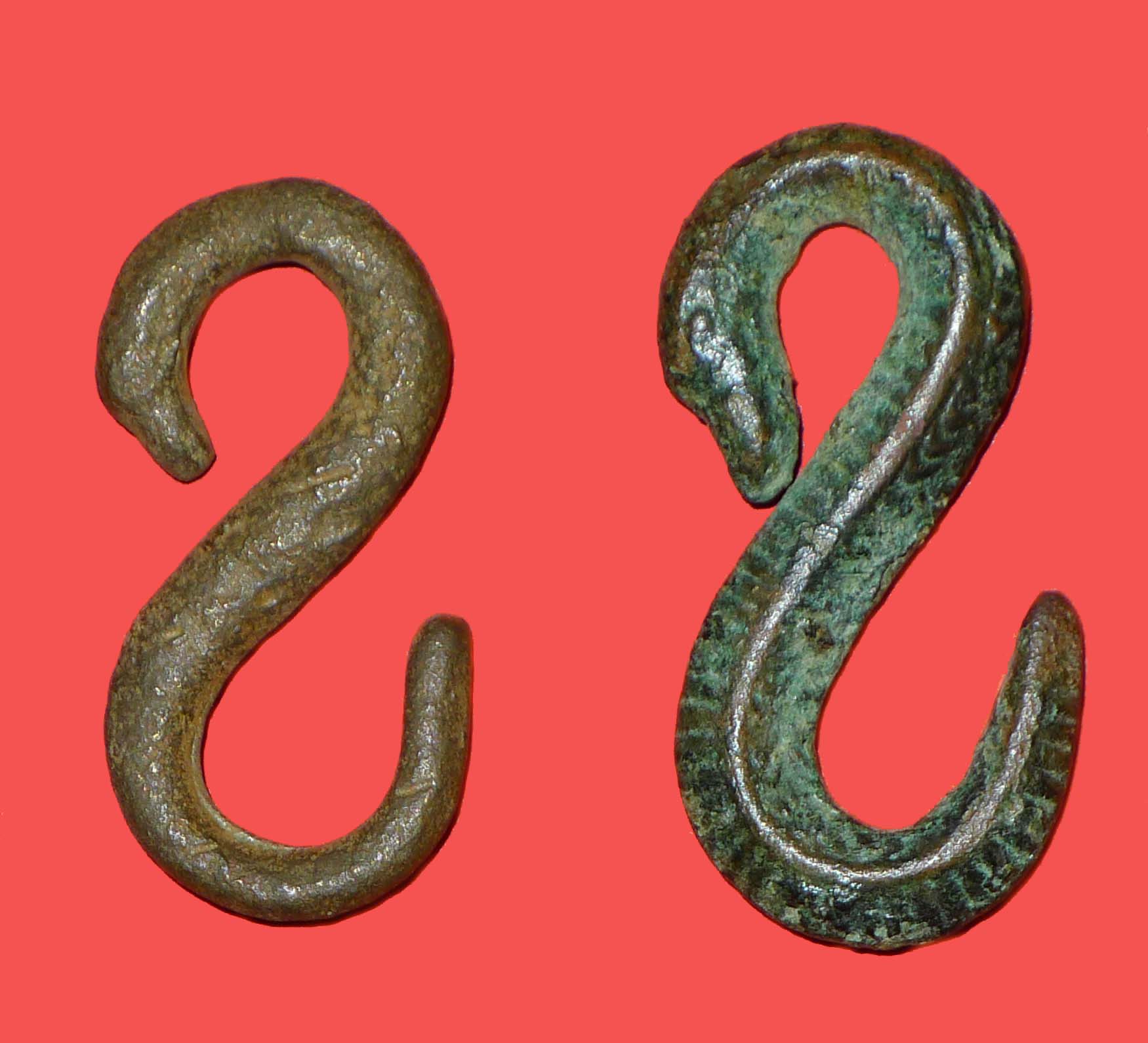For centuries regalia manufacturers have adopted elaborate designs for belt buckles, some of which were often imbued with symbolic meaning.
One such design is the symbolic depiction of a serpent on belt clasps. Over the centuries this design has proven to be very popular, and is considered typically to represent the dual expression of good and evil. Figure 1 show an example found in Badsey and dating from the 17th-18th century. This is identical to one that was recovered from excavations at the Boralga Native Mounted Police camp in Australia (Figure 2).


These are moulded, S-shaped brass or copper alloy buckles, comprising of a snake’s head on both ends. Even though manufacturers who produced this style of clasp sometimes adopted a swan rather than snake head design, these buckles are still commonly referred to by collectors as ‘military snake buckles’. Identical buckles are also sold today as 'confederate snake buckles' dating from 1861.

Figure 3 shows two single head buckles. The dates of these are uncertain, but undoubtedly old, and both found in Badsey. The initial design date of the double headed snake clasp is uncertain, but this serpentine form may have existed as far back as medieval times. For centuries it has been utilised worldwide within a variety of vocations, such as on the belts of British school uniforms, prison wardens, police, the RAF, firemen, and as apron hooks by the Freemasons.
The buckles reminds of times past and the way that we as young boys were dressed; grey “shorts” down to the knees with (at this time of the year) long grey socks pulled up to the knees. The shorts were always held up by a snake belt.
Peter Stewart, December 2020
